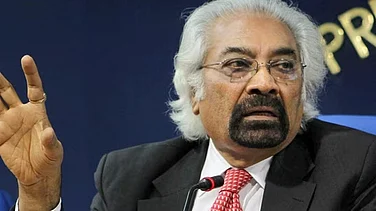As the government determinedly focuses on Poshan Abhiyaan, with India home to a third of the world’s malnourished children, one aspect that the national nutrition mission is giving especial focus to is Complementary Feeding – when the child is introduced to other foods and liquids in addition to breast milk between 6-23 months of age.
The focus on complementary feeding comes amid the disturbing data on nutrition – that shows that less than 10% of children receive adequate diet in the country.
Despite decline in infant and child mortality and the existence of a favourable policy environment, progress in achieving high coverage of infant and young child feeding (IYCF) has lagged.
Advertisement
In India, 38 % of children under age five years are stunted, and 21% are wasted, signifying acute and chronic undernutrition. As per the National Family Health Survey IV data, the percentage of young children (6-8 months) who were introduced to complementary feeding declined from 52.7% in 2006 to 42.7% in 2016, with decline noted across most states.
Only around one-third of all children age 6-23 months receive the minimum meal frequency, and less than one fourth - 22% - meet the minimum dietary diversity, with large disparities across and within regions.
The Ministry of Health & Family Welfare has launched Home Based Care of Young Child (HBYC) programme under which additional home visits by Accredited Social Health Activists (ASHAs) (beyond home based new-born care visits) starting from the 3rd month and continuing in the second year till 15 months with support from Anganwadi workers have been planned to plug the gap between health system contacts with family.
Advertisement
These additional contacts provide a platform to improve exclusive and continued breastfeeding, adequate complementary feeding, age-appropriate immunization and early childhood development.
Among the steps envisaged to improve complementary feeding include improving access to locally available nutritious and safe complementary foods and optimal complementary feeding practices; tailoring social and behaviour change strategies into the programme, scaling up actions to ensure optimal coverage and robust monitoring and review mechanisms to track progress.
In view of the need to stress on complementary feeding, the Ministry of Women and Child Development, Government of India, along with Project Concern International (PCI) and Alive & Thrive (A&T) are organising a day-long National Consultation on Complementary Feeding Programming in India on Tuesday, March 19, Le Meridien Hotel, New Delhi.
The objective of the consultation is to discuss emerging global/regional and in-country evidences to improve complementary feeding practices and deliberate on strategies to strengthen system’s actions across health, ICDS and Self-help group platforms to ensure optimal complementary feeding outcomes for young children.
The consultation is expected to inform development of an action framework to improve the CF programme delivery across multiple platforms and boost the Poshan Abhiyaan scheme.
The day-long session will be inaugurated by Rakesh Srivastava, Secretary, Ministry of Women and Child Development, and include experts from various ministries and partner organisations like PCI, A&T, Bill and Melinda Gates Foundation, Unicef, JEEViKa, and others.
Advertisement
The first 1,000 days of a child’s life -- from conception through age two -- is a critical window of opportunity to ensure child survival, optimal growth, cognitive development, and lifelong health. The largest part of this window is the complementary feeding period (6-24 months) -- the period of transition from exclusive breastfeeding to consuming a wide range of foods in addition to breastmilk.
Although considerable growth faltering can occur during the prenatal period and the first 6 months after birth, a large proportion of stunting in low-income countries occurs during this 18-month interval. Inadequate nutrient intake from complementary foods and the high incidence of infections during this stage in disadvantaged populations are major causes of stunting and other adverse health and developmental outcomes.
Advertisement
Globally though some progress in reducing childhood stunting is seen, yet over 150 million children remain stunted as per the Global Nutrition Report 2018.
In India, 38 percent of children under age five years are stunted (too short for their age) signifying chronic undernutrition. Prevalence of underweight increases consistently in the first 24 months; there is not much difference in stunting among children under-two and those under-five . Twenty-one percent of children under age five years are wasted (too thin for their height), which is a sign of acute undernutrition, while 36 percent of children under age five years are underweight. Moreover, fifty-eight percent of children age 6-59 months have anaemia (haemoglobin levels below 11.0 g/dl).
Advertisement
Across the world, fewer than one in five children (15.6%) aged 6-24 months eat a minimally acceptable diet as stated in Global Nutrition Report 2018.
In India, only around one-third of all children age 6-23 months were meeting the minimum meal frequency (MMF), that is, children who are receiving solid, semi-solid, or soft foods the minimum number of times or more, and less than one fourth (22%) are meeting the minimum dietary diversity (MDD), that is, children who received foods from more than or equal to four (out of seven) recommended food groups, with large disparities across and within regions.
Advertisement
Nationally, the percentage of children receiving adequate diet continues to be very poor at less than 10%, varying between 0-31 percent across states. Only in Tamil Nadu and Puducherry did more than 30 percent of children receive an adequate diet. Children in rural areas - 20% - are less likely to have adequate diverse diet compared to urban areas - 28%.
The POSHAN Abhiyaan launched in March 2018 to accelerate the reduction of under-nutrition in the first 1,000 days of life, reiterates government’s commitment to improve early childhood development, optimal nutrition, hygienic environment and access to quality health & nutrition services.




















